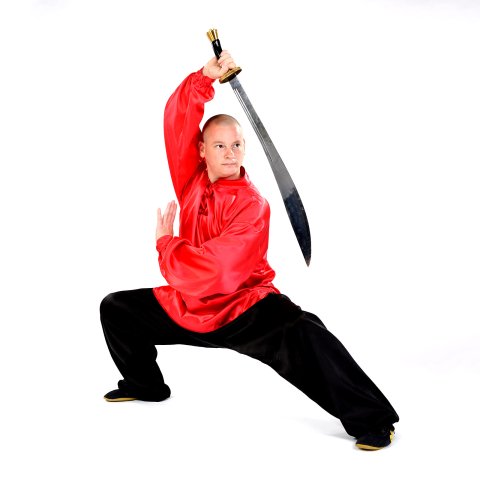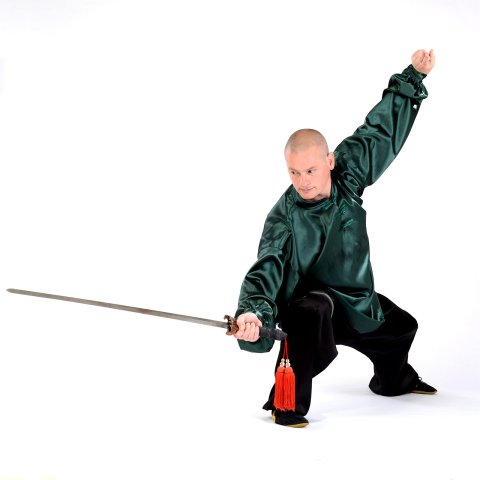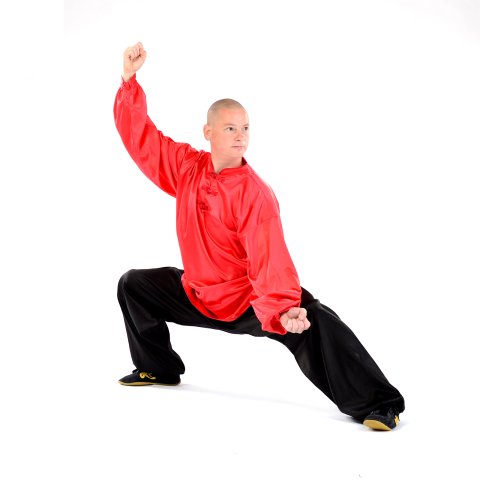Training
Tai Ji Quan 太极拳
… is a form of Chinese (health, energy and martial arts) practice that originated in ancient times from the external and internal styles of Kung Fu, traditional traditional Chinese medicine and the spiritual principles of Taoism. The practice is rich in health benefits, for the physical, mental and spiritual development of a person.
Chen style Taiji 陳氏 太極拳 , as we know it today, was developed gradually, across several centuries. The founder was a legendary master from the turn of the Ming and Qing dynasties – General Chen Wang Ting – 陳王廷 (1580 – 1660). For nearly 400 years, the Chen family clan maintained its efficient style only within the family, or allowed the involvement of relatives and close persons. Today we can pass on this beautiful art through the many years of teaching of our Masters and teachers who have been coming to us (or we to them ;-)) since the early 1990s Chen Xiao Wang 陈小旺, Chen Zhen Lei 陈正雷, Chen Shi Hong 陈时红, Chen Bing 陳炳, Chen Zi Qiang 陈自强 and others.
We try to develop the human being in his complexity (body-breath-energy-heart-mind-spirit). Everyone can become aware of the depth and its layers within him/herself during the practice. It is best if we work with the level that is our own and gradually develop and deepen the others. Each level, if practiced properly deepens itself automatically. We also use Qi Gong, meditation practices and human body stabilization techniques when practicing Tai Chi.
We practice:
- Preparatory forms – 10 Ji Ben, 13 principles (energies)
- Short forms – 18 movements and 38 movements
- Core Style – Old Frame (老架; Lao Jia): Lao Jia Yilu (一路) + Lao Jia Erlu (二路)
- Advanced Forms – New Frame (新架; Xin Jia): Xin Jia Yilu (一路) + Xin Jia Erlu (二路)
- Weapons – fan, sword, broadsword, spear
- Pair exercises – Tui Shou (推手; pushing hands), applications, lever techniques
Qi Gong 炁功
…is a very beautiful and ancient teaching about inner energy.
It combines the experiences and teachings of the ancient Masters with the insights of modern teachers, physiotherapists, mystics and traditional Chinese medicine doctors. The harmonious interconnection of the body-breath-mind trinity induces in the practitioner an inner calm and balance that, through repetition, transcends into the calm and balance of the whole being. The structure of the body becomes clearer, muscles relax, nerves relax, the hormonal system balances and energy begins to flow freely without blockages through and around the body. The ensuing feelings of peace and harmony, joy and wholeness fill the practitioner's inner space of heart and mind. The wonderful advantage of these inner exercises is that the practitioner himself verifies the validity of the above statements by his own experiential experience.
By practicing Qi Gong we will straighten out the structure of the body, stretch and relax the organ pathways, tendons (superficial and deep fascia) resulting in a gentle massage of the internal organs, stirring and strengthening the blood, and causing a gentle warming of the whole body. The most important energy channels, centres and reservoirs are then balanced and strengthened. In this way, you can taste and feel for yourself the experience of the Old Masters, not only in the physical body, but also in the heart and mind.
At our school we practice:
- Ba Duan Jin (八段錦) – eight pieces of brocade
- I Jin Jing (易筋經) – strengthening the tendon/muscle and fascial system
- Gui Gen – “Return to the Roots” (5 Elements, Yin/Yang Organ Exercise)
- Ba Yuan Mai – activation and harmonization of the 8 special pathways
- Fang Song Gong – relaxation exercise
- Ji Ben Gong – preparatory and energizing exercises
- Liu Zi Jue – Six Inner Sounds
- Old Man – purification of the emotional body
- Zhan Zhuang Gong (站桩功) – static tree postures
- Chan Si Gong (纒絲功) – silk reeling
- and others
Meditace – Chan 禅
…2500 years ago, the Buddha taught his disciples body-viewing, breath-viewing and mind-viewing.
Today in modern times, especially in the last two decades, we experience a kaleidoscopic variety of techniques and practices that connect the body with the breath (movement of breath and energy), with the mind and with calm pure awareness.
In our school we follow a gradual path, much like Patanjali taught in about the 2nd century BC.
(Yama – Niyama – Asana – Pranayama – Pratyahara – Dharana – Dhyana – Samadhi)
We learn to develop external and internal discipline – anchor the correct body positions (physio, qi gong, yoga) – develop breathing techniques (internal and external) – learn to control the senses – practice various concentration techniques (chakras, meridians, extraordinary pathways, organs ) – the above exercises allow a gradual ease of entry into meditation (in a narrower sense) – samadhi (unification of the observer, the observed and the process of observation) is then the crown of the Path.
We draw on internal and external sources of support, for example:
- From Taoist and Tibetan teachings, from Christian mysticism
- Paramhansa Swami Maheswarananda – Atma Chintan
- Ramana Maharshi of Arunachala – Atma Vichara
- Eduard and Mila Tomas
- Jiří Vacek
- František Drtikol
Physio – Tong Zi Gong 童子功
Do you know anyone in your life who is not in pain? … probably not many.
And yet, today's age is so outwardly happy to flaunt its excellence in various aspects of our lives, we have a high standard of living and can buy much of what our hearts desire. But that is just the world around us.
The observation and perception of the world around us and ourselves is tied to one “thing” and that is consciousness. Without consciousness, there is no perception or awareness of anything. No Bamboo, no Flute, no Sound. And our human consciousness is tied to our physiological body and all that goes with it.
My spiritual master's master used to say: “My Brothers, I saw a beautiful chariot (body) drawn by 10 horses (senses). The robes were the Buddhi (intellect) driving the horses. The chariot was Manas (mind) holding the reins. Inside sat the King himself (Atma, Spirit, Shen), accompanied by his faithful chanter Vivekha (discrimination).”
The body, sense organs, intellect and mind are the instruments of our Spirit (Atma, Shen).
In what state this “chariot” (body) will be, in that state we will perceive and experience our entire journey through the world.
So it is good to start with “A”:
- How do we feel our own body?
- In what state is our skeletal-muscular system?
- Are our nervous and hormonal systems in balance?
- Do we feel the connection between our fascial and energetic systems?
- Can we relax our body deeply?
… these are the questions we should ask ourselves early on, while we can actively do something about it.
We practice with good results:
- Postural stabilization system
- Exercises to strengthen the middle of the body
- Physical rehabilitation techniques
- Yoga postures and pranayama
- Musculoskeletal system and fascia
- Relaxation techniques




